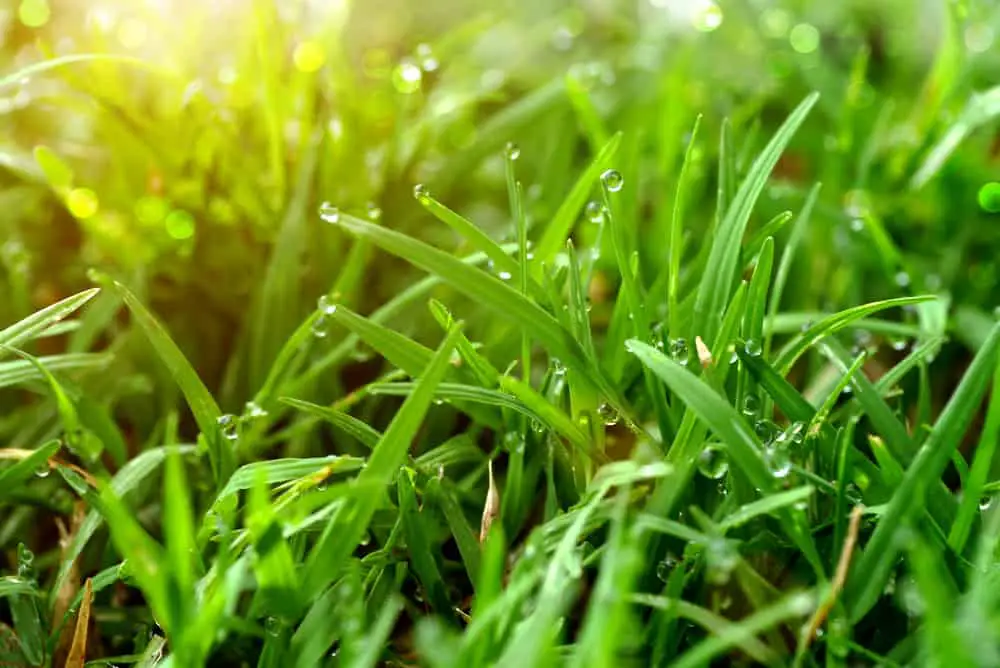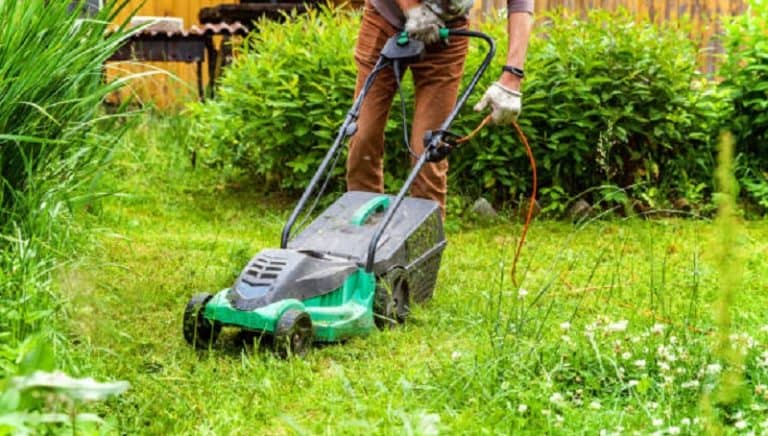Does St. Augustine Grass Grow in Shade?
St. Augustine grass doesn’t mind a bit of shade, so no need to fret if your yard isn’t super sunny. Interestingly, around one-fifth of these lawns thrive with less light. Just make sure the grass enjoys about 4 to 6 bright hours a day. Got shady corners? Try trimming some tree branches to let a bit of sun peek through. Letting your grass grow taller, say to 3 or 4 inches, can also help as taller grass catches more sunlight. Lawn lovers might find that using organic fertilizers and watering deeply but less often can toughen those roots right up. These easy-peasy tips can really help a shadowy yard spring back to life, slowly becoming more lively. Keep watching, and see your shaded area transform day by day!
Read on to find out if St. Augustine grass can thrive as well in shady lawns as in the sun.
St. Augustine grass generally grows well in the shade as well as in full sunlight. Some cultivars of St. Augustine, like Sevilla and Palmetto, have especially high shade tolerance.
Contents
Most Shade Tolerant Cultivars of St. Augustine Grass

Bright sunlight is a basic need for most grasses to thrive. How much is needed by grass species and the cultivars within those species is another question altogether.
Thus, growing warm-season grass like St. Augustine in shaded areas is not very straightforward. It can easily die in the shade. Different St. Augustine strains have specific shade tolerance and sunlight requirements to grow well. Moreover, there can be varying kinds of shady lawns.
Some lawns get restricted sunlight based on seasons or as yard trees mature over time. Whereas other lawns may partially receive full sunlight- one corner may be shaded throughout the day due to an abundance of trees or a building blocking sun exposure.
In such cases, it is crucial to choose a grass like St. Augustine that thrives in direct sunlight but can survive in the shade too.
Some St. Augustine grass cultivars have comparatively excellent tolerance to shade and can sustain growth in as little as six hours of sunlight. Some even survive with just 4 hours of daily sun exposure, but that is rarely the case.
Research from the University of Florida shows that the most shade tolerant St. Augustine grass strains include Seville and Delmar. Whereas, Palmetto, CitraBlue, and Bitter Blue also perform well in up to 60% shade.
For heavily shaded lawns, you should do well to avoid the widely-used Floratam cultivar. Floratam doesn’t perform well when it does not receive at least 8 hours of sunlight, making it a poor choice for shady lawns.
Growing and Caring for St. Augustine Grass in Shade
Although various cultivars of St. Augustine grass tend to survive in the shade, they need special care to sustain themselves under stressful conditions.
Even the strains that do relatively well in the shade in terms of grass color and density will struggle if your lawn receives no sunlight at all.
For partially shaded lawns, 4 hours of direct sunlight or 6 – 8 hours of filtered sunlight can allow St. Augustine grass to grow in abundance.
What do we mean by partial shade? Partial shade is where some sunlight is allowed to pass through as it is cast by trees, fences, hedges, and bushes. However, with perforated sunlight, this war season turfgrass will still need a lot of attention if you were to enjoy a lush green lawn.
There are certain management practices that you should follow religiously to allow the already under-stressed turfgrass (due to lack of sun exposure) to do well.
Mowing Height Considerations
One of the most trusted mechanisms to stress-manage St. Augustine grass is to mow it at the maximum recommended height. This mechanism works because by mowing higher, you allow a wider leaf area that can absorb more sunlight.
Moreover, the added height allows for stronger rooting.
If you have a partially shaded lawn, then mow up to 4 inches in the areas that do not receive optimal sunlight. If you feel like your grass still looks spindly, you can even increase the grass height to 5 inches. Whereas mowing the grass to the height of 3 to 3 ½ inches does the job in areas receiving direct sunlight.
Fertilizer Applications
Since St. Augustine grass in shaded areas grows at a much slower pace than in the full sun, use a gentle fertilizer.
Therefore, slow-release nitrogen fertilizer is best-suited to provide the grass with nutrients at a slow yet steady pace.
Using too much fertilizer can result in weaker grass since it uses up carbohydrates. According to research, grass in shaded conditions does well when provided with potassium. Potassium helps St. Augustine grass to fend off disease and improve its fungal resistance.
Therefore, using a fertilizer with the same (or close to the same) amount of nitrogen and potassium will help improve sustainability.
We recommend the Ironite 100519460 1-0-1 Mineral Fertilizer that works wonderfully for St. Augustine in shaded gardens. This will provide enough nitrogen for consistent growth without overloading the turf system with nitrogen.
.
Watering Considerations
Shaded St. Augustine grass needs less watering compared to grass growing in full sun.
There is a straightforward reason why shaded grass needs less water. Since shaded grass is not exposed to sunlight, water doesn’t evaporate as quickly. Thus, its watering needs differ from grass getting direct sunlight.
Watering shaded grass just as much as grass growing in the sun propagates disease because of increased humidity and moisture. This also hinders proper air circulation.
A good practice for partly shaded areas is to not rely on sprinkles for irrigation. Do it by hand for better control.
Even when watering St. Augustine grass by hand, make sure to monitor it closely for disease, yellow blades, overtaking weeds, or excessive moisture. If you find any of these signs, reduce the watering session duration of the shadowed areas by 15 or 20 minutes.
You can adjust your watering schedule as per the growth and health of your grass.
Weed Monitoring
Weeds usually thrive in shaded areas. Therefore, you will need to keep a close eye on the grass growing away from direct sunlight.
Weeds are invasive and fight with the grass for nutrients. Since, without bright sunlight, the grass already grows at a slower pace, weeds can easily overcrowd it if not dealt with timely.
Shaded grass usually doesn’t cover as much ground as one thriving in direct sun; therefore, it is more susceptible to weeds.
There are two ways to treat weeds. You can use a pre-emergent herbicide or a post-emergent herbicide.
As you can tell by the name, you use a pre-emergent herbicide before weeds germinate to deal with them as swiftly as possible. However, if weeds have taken over the grass, you can opt for the post-emergent herbicide to kill them and ensure they do not grow back.
Watch Out for Heavy Traffic
Even in optimal lighting conditions, St. Augustine grass does not tolerate heavy foot traffic. This is one of its biggest drawbacks.
Under the shade, the already stressed St. Augustine grass’s traffic tolerance goes down even further. Even moderate traffic can destroy grass blades and ultimately kill them.
Limit usage of the grass in shaded areas. If you have pets, ensure they do not run over or urinate on the grass.
Any damage to the grass will take much more time to recover in shade than it would under the sun.
Competition from Trees
Trees in shady lawns do not just hinder sunlight which puts the grass under stress. Especially with bushier trees, the grass planted under them competes with them for nutrients in the soil. Moreover, this competition goes beyond just nutrients, extending to space needs and water consumption.
With trees, many times, the underground root system is much more extensive than the branches above. Therefore, this competition could affect grass planted further away from the trees as well.
If, after all the precautions, the grass under tree shades is not sustaining, you might have to do one of two things:
- Remove lower tree branches
- Remove the trees
How Much Shade is Too Much Shade for St. Augustine Grass?
The great news about almost all cultivars of St. Augustine grass is that even if they have moderate shade tolerance, they still tend to grow well enough in partly shaded lawns with filtered sunlight.
However, St. Augustine strains with high shade tolerance require at least six hours of sunlight.
If your lawn has heavily shaded areas, you should think of alternative ground covers than grass.
You can go for mulch or gravel – even plant flowers that do well in shaded areas. Some other good options for such gardens are Carpet Bugleweed, Japanese pachysandra, and Lily of the Valley.
All in all, you can go for any plant that has lower sun requirements than turf grass with easy maintenance.
Augustine Shade Tolerance Vs. Other Warm Season Grasses
Despite being a warm-season turfgrass, St. Augustine provides thick, lush green carpet for your lawn, even when exposed to partial shade.
Compared to other warm-season grasses like Bermuda grass, St. Augustine proves to be a much better choice for shady lawns. Bermuda grass will not grow under thick tree shade or shadows cast by buildings.
If you live in a warm region with a shady garden, St. Augustine is the perfect turfgrass for a beautiful yard.
Conclusion
To recap, the answer to whether St. Augustine grass grows in shaded areas is yes! However, some St. Augustine grass strains perform better than others.
With shaded grass, you need to take extra care while watering and mowing to propagate optimal growth. In the case of heavily shaded areas, consider an alternative ground cover.






